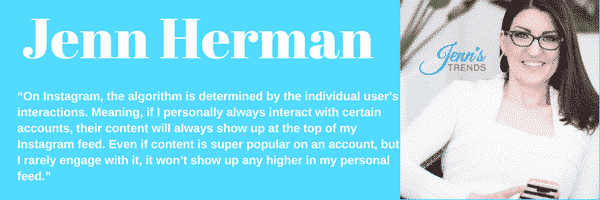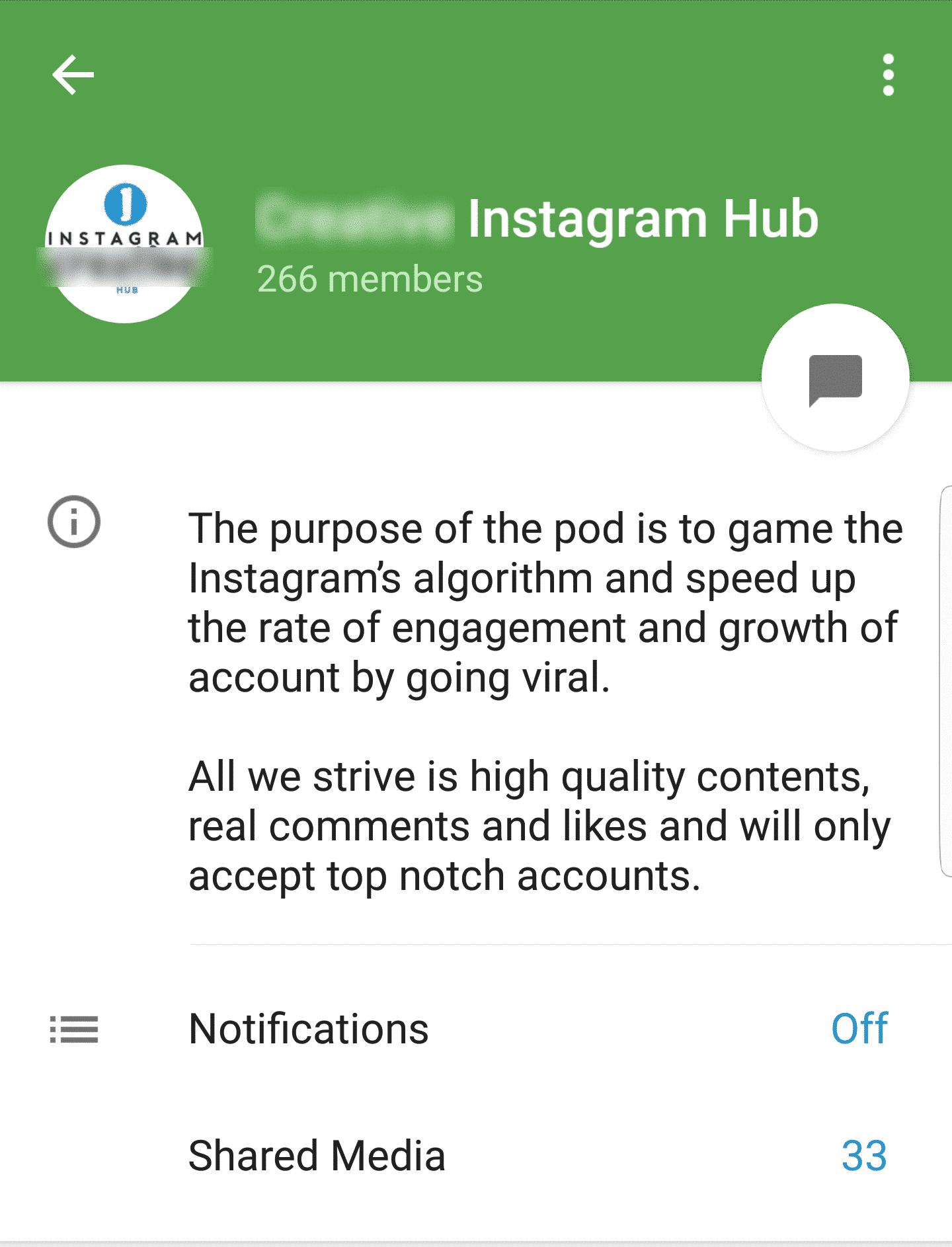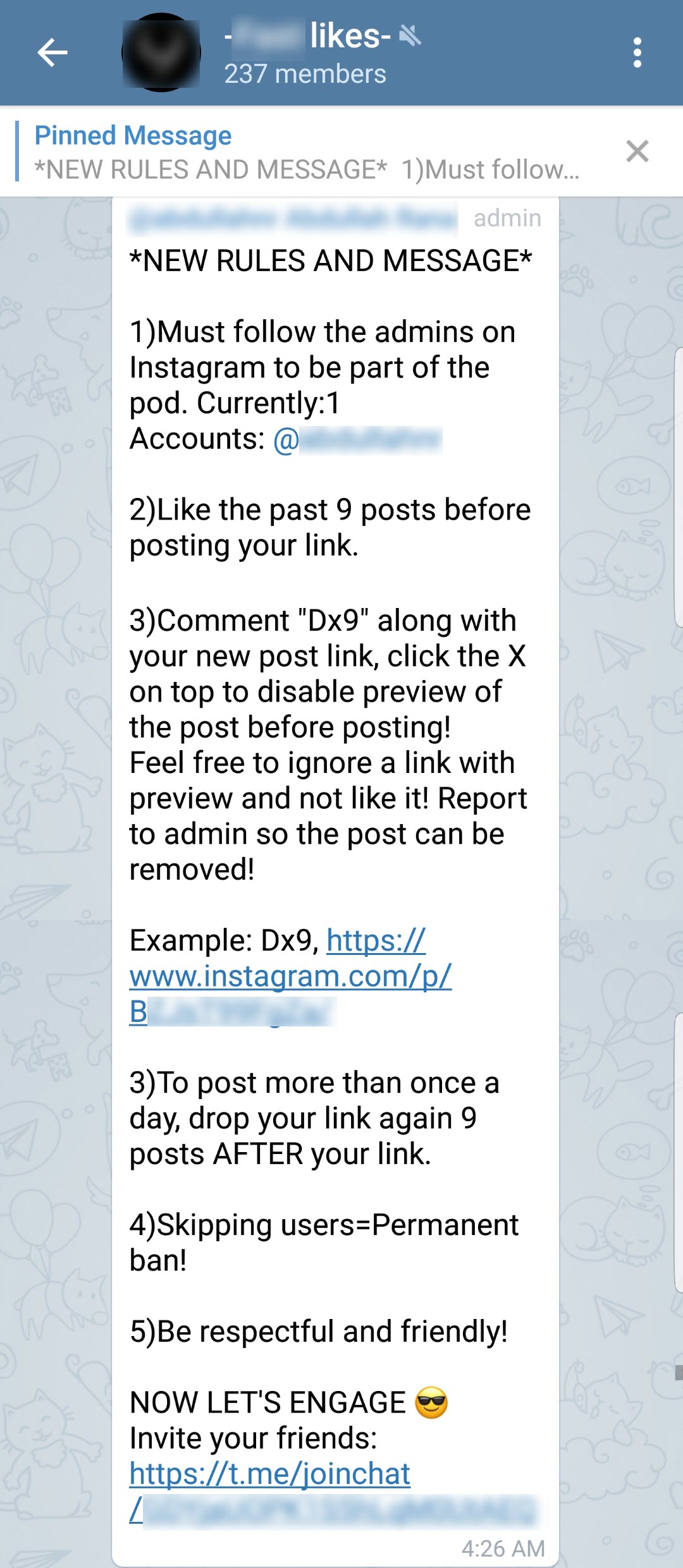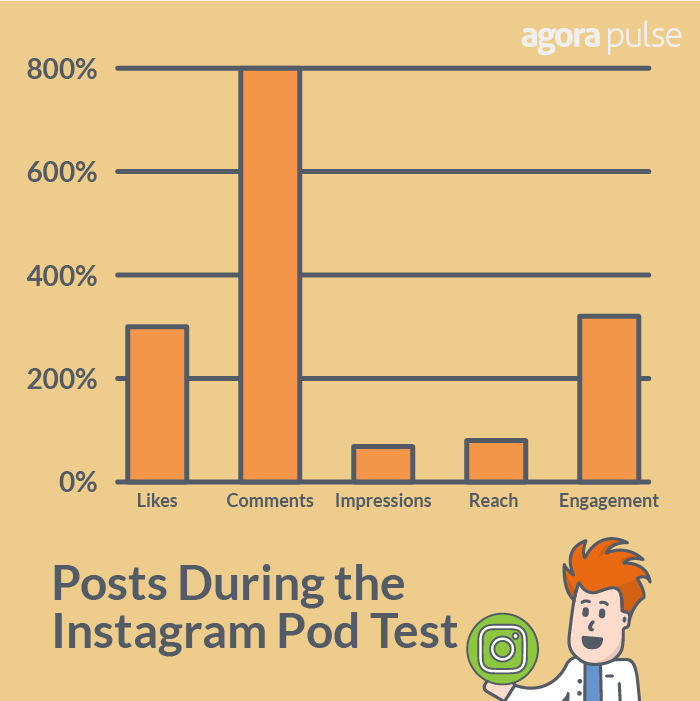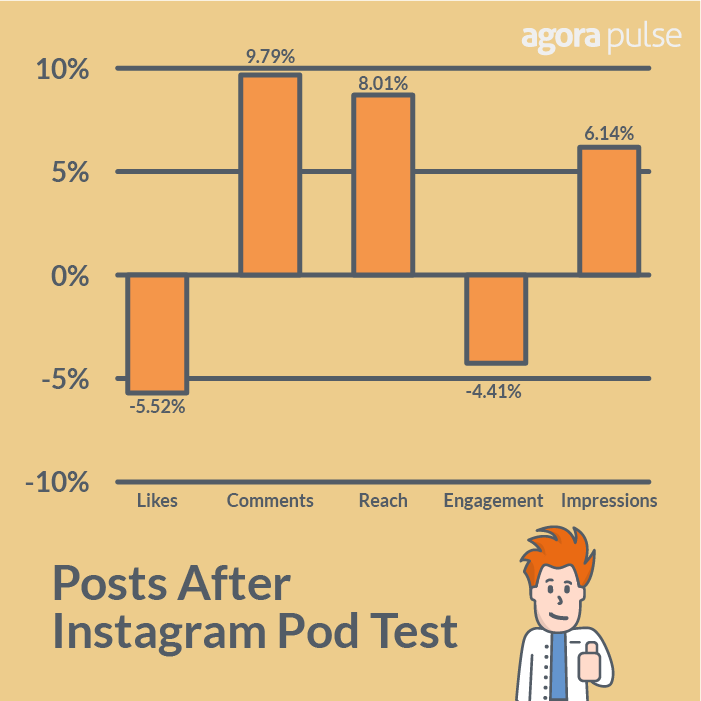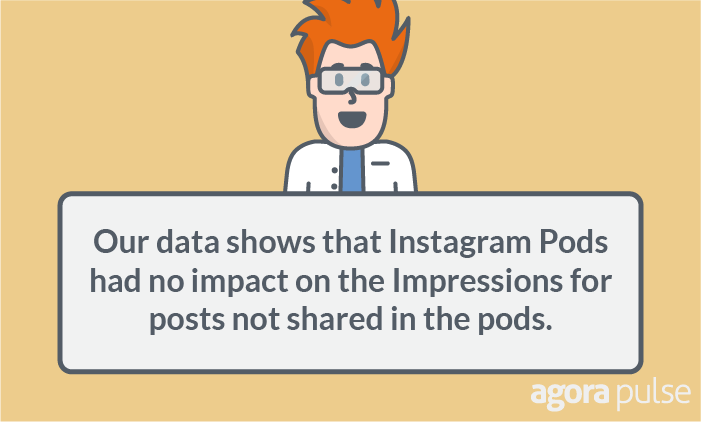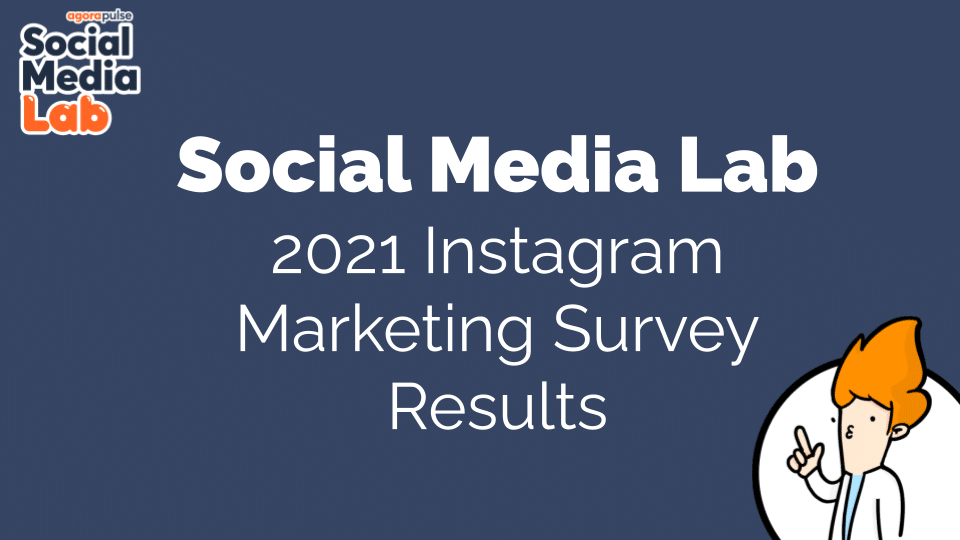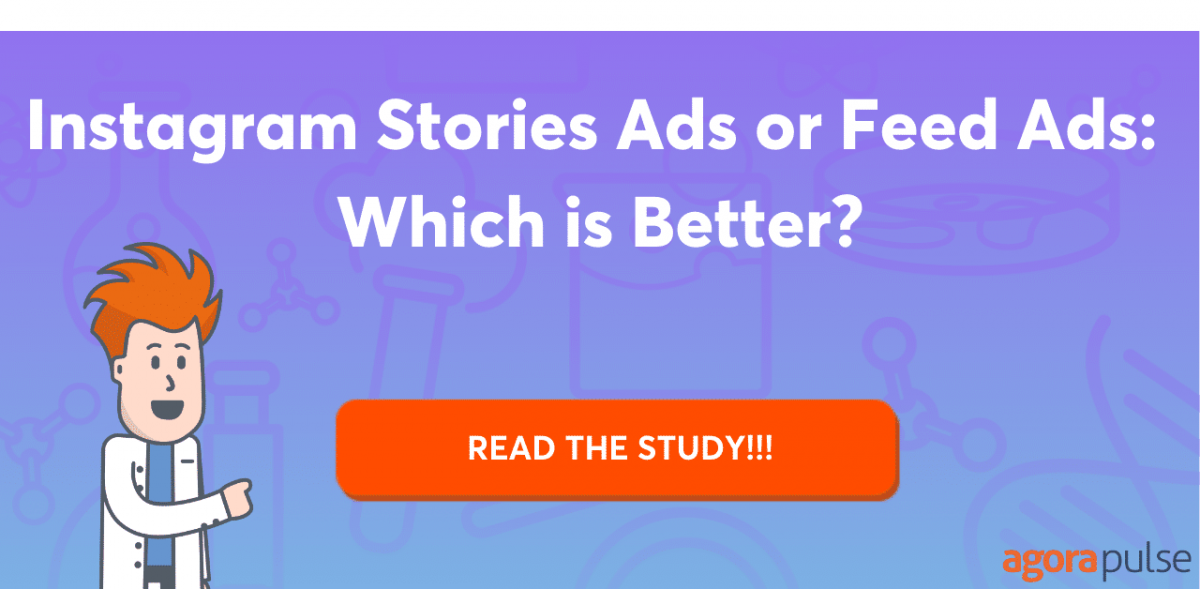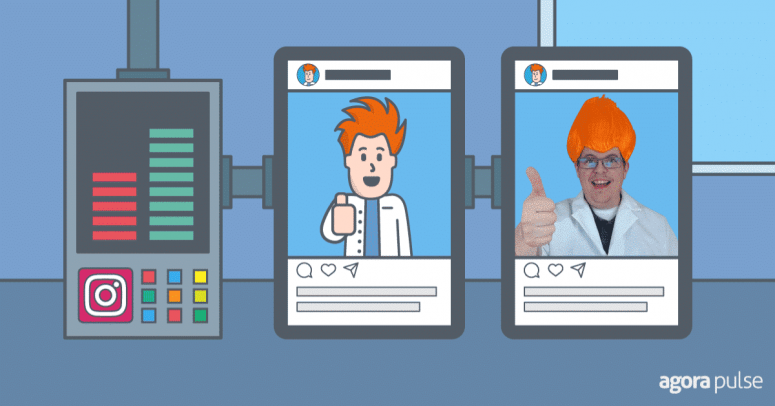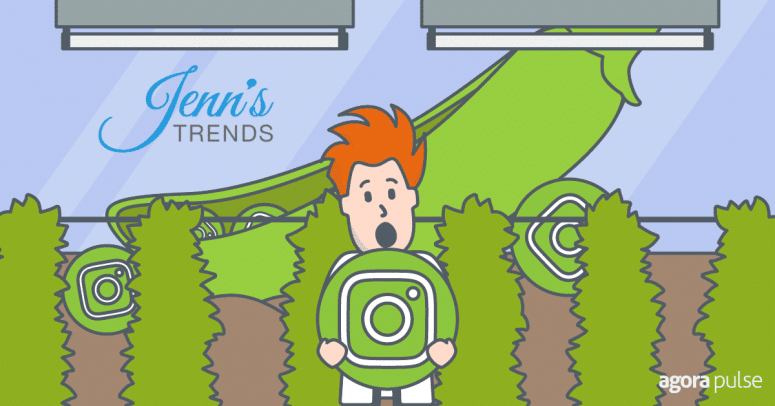
Social Media Lab powered by Agorapulse
Getting file data...
Subscribe to the Social Media Lab Podcast via iTunes | Stitcher | Spotify
Instagram Pods: Do They Help or Hurt?
Instagram Pods are not weird pods from the “Invasion of the Body Snatchers” movie!

Photo Credit: Drafthouse
Instagram pods are a hush-hush, underground world where Instagram users try to trick the Instagram algorithm in an attempt to get more likes, comments, impressions, and followers.
According to Jenn Herman of Jenn’s Trends, Instagram Pods are:
“An Instagram pod is a group of like-minded people on Instagram who connect via a group DM or Facebook group and proceed to like and comment on every single post that the others in the pod share to Instagram. The proposed result is increased post engagement, genuine comments, and, as a result, better rankings in the Instagram algorithm. “
The idea is by getting this fabricated increased engagement, you can trick Instagram’s algorithm and your posts will show up more in the feed of your followers.
But, as Jenn points out, Instagram pods have a problem:
“On Instagram, the algorithm is determined by the individual user’s interactions. Meaning, if I personally always interact with certain accounts, their content will always show up at the top of my Instagram feed. Even if content is super popular on an account, but I rarely engage with it, it won’t show up any higher in my personal feed.”
For example, if you had 1,000 people from an Instagram Pod engaging with your post, it will have ZERO effect on whether or not those that follow your Instagram account (and aren’t part of your pod) will see that post or future posts in their feed.
No doubt if you join an Instagram Pod you’ll see more engagement, but according to Stephanie Leishman this could lead to false confidence:
“Recently, I interviewed the owner of a clothing business that has over 40,000 followers on Instagram. She told me that joining an Instagram pod or engagement group gives a false sense of confidence because pod members cause a boost in engagement, but that it doesn’t actually cause many additional people to like, comment, or buy. “It boosts my confidence,” she said, but she stopped joining pods when she realized it wasn’t helping to increase her sales.”
Will Joining an Instagram Pod Help My Account?
From all the blogs I’ve read covering Instagram Pods, I haven’t seen any data to support or diminish the impact of Instagram Pods.
Jenn Hermann — the forefront blogger on all things Instagram— told us she too wanted to see more numbers to confirm or deny our mutual suspicions about Pods.
So I began testing Pods to draw conclusions based on real data.
Hypothesis: The activity from Instagram Pods will not result in an increase in Impressions for posts not shared in the pods.

The Twisted Path of Joining an Instagram Pod
Let me be VERY upfront about something here. Trying to find and get into an Instagram Pod is incredibly challenging!
I spent several hours each day for over two weeks in an attempt to get into one of these Instagram pods.
What I found out is it’s a lot like the movie Fight Club. The first rule of Fight Club is you don’t talk about Fight Club. Instagram Pods are kinda the same way.
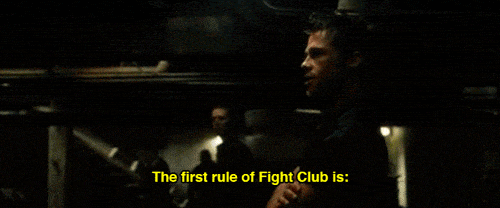
This is most likely why Pods are not open to the public.
After a week or so of digging through tons of Reddit links, Quora questions, and closed “Instagram Engagement” Facebook groups, I was finally let into a few Instagram Pods!
Most that I found gather in Facebook Groups first to discuss and invite others into their Instagram Pods.
From there, I learned that most of the Pod communication happened on an app called Telegram. (It’s a messaging app that doesn’t require you to reveal your identity and isn’t tied to any social platform.)
The reason they all do this is there is a belief that doing all the sharing even in a Facebook Group could hurt your Instagram account since Facebook owns Instagram.
Below is one Instagram pod listing its purpose:

Learning the Ropes of Your Instagram Pod
Once in an Instagram Pod on Telegram, you’ll need to quickly learn the rules for each group.
Here were the rules I typically found.
- Members must like and/or comment on the past XX amount of posts (or all posts the last 24 hours). Most were 10 or fewer posts.
- Comments must be at least 4 words long.
- Members are required to follow the admins of the group.
- You might have to “Save” the post with some groups – This is a way pods believe can further trick the algorithm.
- Once you’ve met the rules of the group, comment in Telegram with “DX10” (that number could be different depending on the rules, DX I believe just meant “Done last X amount of posts).
- Post your Instagram account username along with the link to the post you want others to engage with.
- Before posting, remove the link preview. Note: If you don’t do this, people call you out VERY quickly!
- Max of 2 posts per day in the pod.
- Skipping posts by others will get you warned and ultimately banned from the Instagram Pod.
- No additional chatter in the group.
- Here’s an example of the rules from an Instagram Pod I joined:

How I Tested Instagram Pods
In total I joined 5 Instagram Pods — some were to give Likes only, others were to give Likes and Comments.
I decided to use the @Agorapulse account on Instagram for this test.
I originally shared a post from October 4th to 2 pods to see if they were worth the trouble. Before posting to the Instagram Pods, the post had about 30 Likes. This was on October 10th for reference purposes.
Immediately I saw the Likes and Comments begin to shoot up from those in the Instagram Pods.
Based on seeing the engagement rise, I posted daily for the next 6 days in each Instagram Pod I had joined.
Data from Instagram Pod Test
I dove into the Insights for 7 posts before I got into the Instagram Pods to get a baseline on what our engagement looked like.
Average Insights of 7 Posts before the Instagram Pod Test:
- Likes per post: 31
- Comments per post: 1.43
- Saves: 0
- Impressions per post: 278.57
- Reach per post: 224.71
- Engagement per post: 32.43
Average Insights of the 7 Posts used in the Instagram Pods Test:
- Likes per post: 126 (306.45% increase)
- Comments per post: 12.86 (799.30% increase)
- Saves per post: 2.71 (100% increase)
- Impressions per post: 432.86 (55.39% increase)
- Reach per post: 351.29 (56.33% increase)
- Engagement per post: 141.57 (336.54% increase)
Not shocking that all of the numbers saw a drastic increase — that’s the entire point of the Instagram Pods.
To really decide if Instagram Pods are worth the effort, I analyzed the Insights of posts I don’t share with Instagram Pods.
After I stopped sharing posts to the Instagram Pods, I posted once per day to our account for 7 days.
Average Insights of the 7 Posts after the Instagram Pod Test:
- Likes per post: 29.29
- Comments per post: 1.57
- Impressions per post: 296.43
- Reach per post: 242.71
- Engagement per post: 31
As expected all of these numbers were lower than the posts shared to the Instagram Pods.
The goal of the Instagram Pods is to increase engagement, impressions for future posts.
Let’s put this into percentages compared to the posts before the test.
- Likes: down 5.52% per post
- Comments: up 9.79% per post
- Reach: up 8.01% per post
- Engagement: down 4.41% per post
- Impressions: up 6.41% per post
- Impressions up, Engagement down…

Are Instagram Pods Worth the Effort?
My original hypothesis was: The activity from Instagram Pods will not result in an increase in Impressions for posts not shared in the pods.
I’m going to conclude that this was correct.
Although Impressions, Comments and Reach were up on posts following the Instagram Pod test, consider this:
- Prior to joining an Instagram pod, the account had 1105 Followers. After the Instagram Pod test, the account had 1170 Followers — an increase of 5.88%.
Therefore, it’s easy to correlate the increase of 6.41% in Impressions with this increase in Followers.
We also compared the Impressions of the posts before and after the Instagram Pod test and according to a statistical formula called “p-value” there was no statistical significance in this increase in Impressions.
In the screenshot below from AB Testguide “A” was the number of followers on the first post we gathered data from before the test, and “B” is the number of followers we had on the last post we gathered data from after the test.
And with that, I conclude that our data shows that Instagram Pods had no impact on the Impressions for posts not shared in the pods. The only increase seen was for posts sent to the Instagram Pods (which weren’t our followers to begin with).

Instagram Pods are a Waste of Time!
Joining an Instagram Pod is not for the faint of heart.
Although they are free to join — which is why they are so appealing — it’s not for anyone that wants to have a life!
Let me explain.
I spent at least 3-4 hours per day for over a week researching and attempting to join Instagram Pods before finally finding some. My colleague Lisa also spent time looking for these pods. I would estimate at least 30 hours was spent simply trying to get into the Instagram Pods.
In order to share a post into the Instagram Pods each group had its own set of rules to follow that required you to Like, Comment, and sometimes Save the posts of others in the group. I did this in about 5 pods and each of them required at least engagement with 10 posts before adding your own. One of them required engagement for all posts the past 24 hours, which on a few days was over 50 posts! And I did that twice per day at times. That means I had to genuinely engage with more than 500 posts or so during the test. If each post required 1 minute of my time you can quickly see how time-consuming that would be! (500 minutes minimum spent = over 8 hours ) That’s on top of then having to reply to comments left on our posts by those commenting from the pods. Imagine if you were in 10 Instagram Pods?
Dealing with the Telegram app also takes time. As soon as I set up my account, the Pod notifications nearly blew up my phone! Imagine hundreds of people posting messages in each group every few minutes? Luckily I figured out how to turn notifications off, but you can only do it per group. I also began to get tons of spam messages from members of each Instagram Pod individually. It was a total pain in the you-know-where — especially because this was miles away from the native Instagram app.
One Pod was insanely organized and had 5 sub-groups within their main group. You were required to join each of them. 4 of them were Likes and Comment Instagram Pods, the other was a Like-only Instagram Pod. You could only post in 1 sub-group at a time. And have to rotate your post through each group. So you had to remember where your last post was and then move to the next.
Sticking to the Pod rules was another time sucker. One misstep — especially if you’re not actively engaging — and you’ll immediately get called out by the Instagram Pod Police in these groups. I felt like l like I was in my wife’s Kindergarten class letting her know little Johnny had stolen my crayon.
Imagine being a business owner or social media manager and having to work in this effort with the rest of your job!
Final Thoughts on Instagram Pods
While it was fun to see new faces comment on our posts and be exposed to our brand, I doubt any of these Pod members will be potential buyers of our product. (And our product is awesome.)
As a member interacting with other Pod pages, I enjoyed some of the posts others shared. I got to see some cool artwork and photography I otherwise wouldn’t have seen.
The downside is some of the content posted was, shall we say, low quality and “questionable.” Many were photos of girls modeling in hardly any clothes, desperate for engagement on their posts.. I was a bit embarrassed to comment on some with our brand’s Instagram account, but it was part of the “rules” and I didn’t want to break any of them and be sent to time out!
If you want to increase the engagement on your Instagram account, your time is better spent engaging with potential customer accounts and building those relationships. Or spend money on Instagram ads that are targeted towards your ideal customer.
